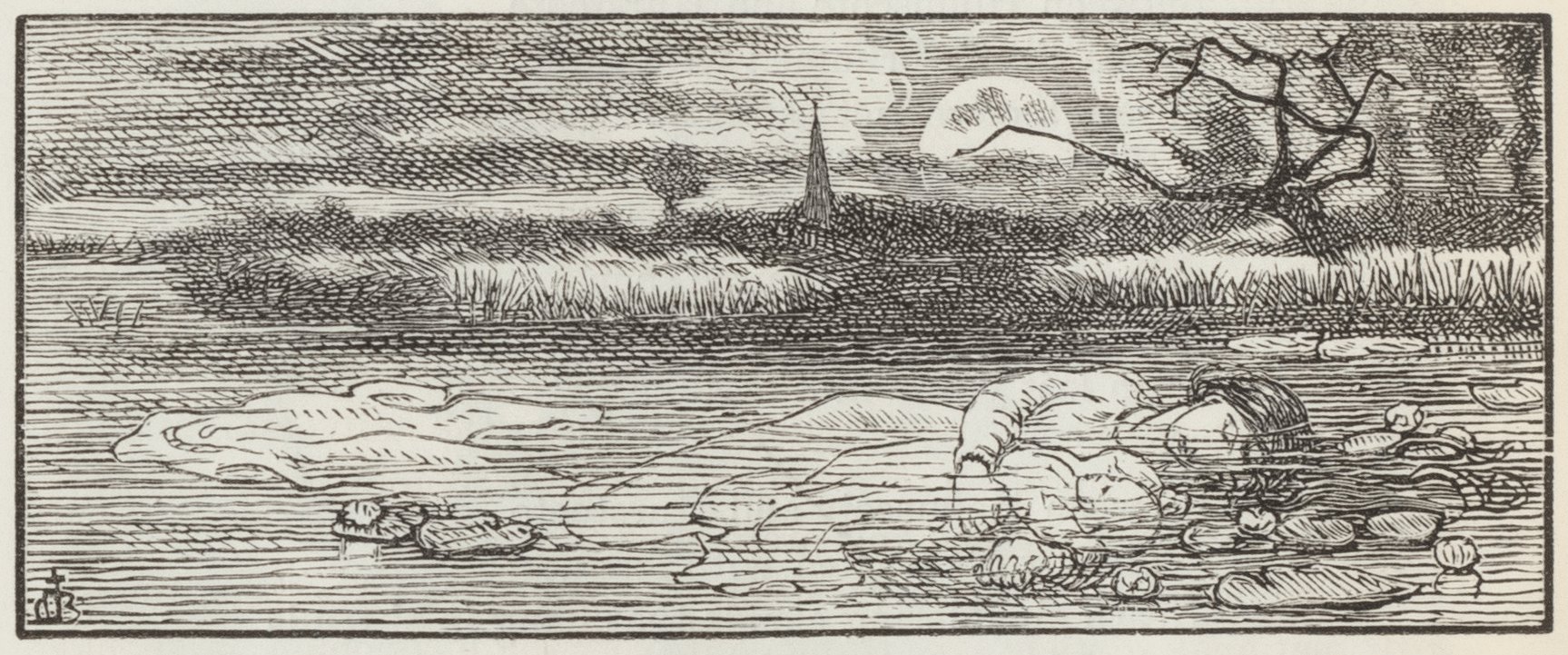Estimated reading time: 1 minute
This post was written by Conway Hall Library & Archives volunteer, Katarina, providing some interesting background to ‘Down Stream’, a pamphlet of the Rossetti poem that is part of our namesake Moncure Conway’s own pamphlet collection. This is just one of over 1300 nineteenth-century pamphlets we are making freely available online through the Heritage Lottery funded digitisation project, Victorian Blogging.

Illustration by Ford Madox Brown.
‘Down Stream’ by Dante Gabriel Rossetti (1828-82) was originally published in 1871 in the literary magazine The Dark Blue (1871–73), alongside two illustrations by Ford Madox Brown.
The Rossetti family was a prestigious one, his siblings being fellow poet Christina Rossetti, critic William Michael Rossetti, and author Maria Francesca Rossetti. Along with William Holman Hunt and John Everett Millais, Rossetti co-founded the Pre-Raphaelite Brotherhood in 1848. The Brotherhood aimed to reform British Art, rejecting what they considered the mechanistic art that succeeded Raphael, and to incorporate the bright colours and intense detail of Quattrocento Italian and Flemish art of the 15th century. From 1851, Rossetti lived opposite Conway Hall, at 17 Red Lion Square; the same house was shortly after inhabited by William Morris and Edward Burne-Jones.
This ballad tells a story of the unhappy ends of a romance and is explicit and honest in its telling. Addressing pastoral idealism, it shares much of the close, descriptive attention to nature that is found in Rossetti’s paintings. A story emerges of a woman made pregnant and abandoned by her lover, with reprobation and blame laid clearly on him. By June the following year, she has drowned herself and her child in despair. The final description of the woman in Down Stream is similar to John Everett Millais’ painting of Ophelia – another literary woman driven to suicide by the actions of her lover.
Rossetti’s poetry was initially ridiculed for its erotic content and was labelled by critics as belonging to the “fleshly school of poetry”. His first collection, strongly influenced by Keats and Dante and in turn greatly influencing William Morris, was published late in his career in 1870. His poems were originally a private affair, unpublished and buried with his wife, who died of an overdose of laudanum in 1862. He was later convinced by his friends to exhume his poems from his wife’s grave and to publish them. Despite criticism, he went on to publish a second collection of poetry in 1881.
Katarina
